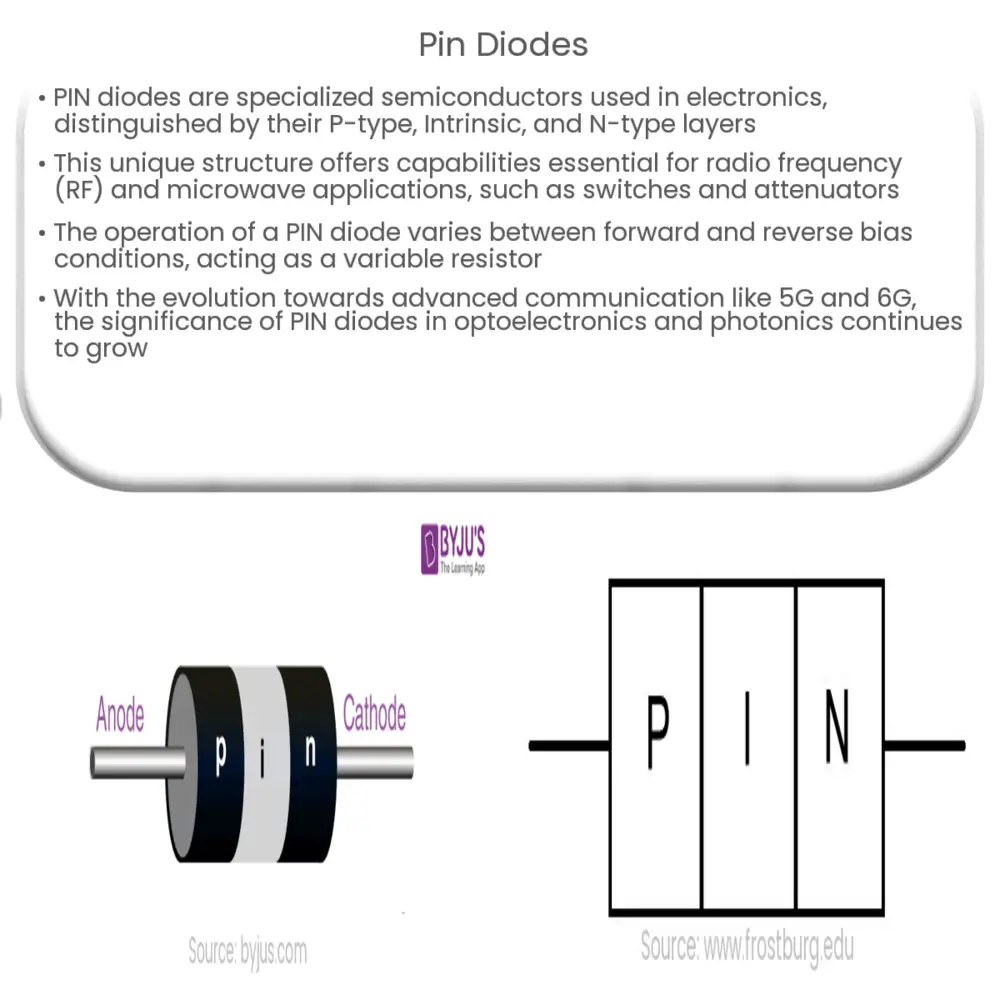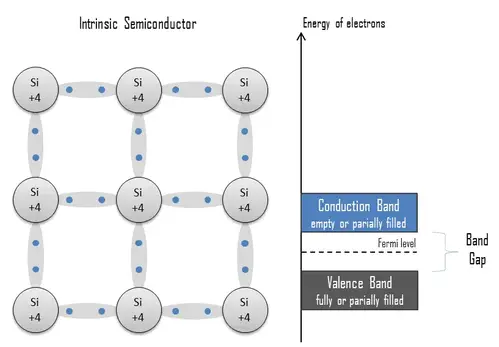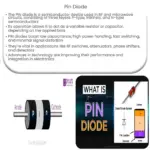Explore the structure, operation, and applications of PIN diodes in electronics, along with their pivotal role in future technologies.

PIN Diodes: An Overview
PIN diodes are unique semiconductor devices that are commonly utilized in the electronics industry. They have distinct structural and operational attributes that differentiate them from other types of diodes, and these attributes are leveraged to deliver specific functionalities within electronic circuits.
The name ‘PIN’ diode comes from the structure of the diode itself, which consists of three layers: P-type semiconductor material, Intrinsic (or undoped) semiconductor material, and N-type semiconductor material. The structure of these diodes is denoted by the acronym ‘PIN’.
- P-type layer: This is a layer of semiconductor material doped with an element that has fewer electrons than the host material. It contains an abundance of ‘holes’, which are effectively vacancies where an electron could exist. In P-type semiconductors, the majority carriers are holes.
- Intrinsic layer: The intrinsic or ‘I’ layer is undoped, meaning it has neither an excess of holes nor free electrons. The electrical characteristics of the diode are largely determined by this layer. Its width can be adjusted during the manufacturing process to modify the device’s operational attributes.
- N-type layer: An N-type layer is created by doping the semiconductor material with an element that has more electrons than the host material. In N-type semiconductors, the majority carriers are free electrons.
The configuration of these three layers results in a device with unusual properties, providing functionality that is particularly useful for radio frequency (RF) and microwave applications. PIN diodes are often used as switches or attenuators in these fields.
Operational Principle of PIN Diodes
The operation of a PIN diode can be understood by studying its basic characteristics under two different conditions: forward bias and reverse bias.
- Forward bias condition: When a positive voltage is applied to the P-type layer and a negative voltage to the N-type layer, the diode is said to be forward-biased. In this state, the diode allows current to flow from the P-type side to the N-type side.
- Reverse bias condition: Conversely, when a negative voltage is applied to the P-type layer and a positive voltage to the N-type layer, the diode is reverse-biased. In this state, the diode blocks current flow unless the voltage surpasses a certain level, known as the ‘breakdown voltage’.
By manipulating these bias conditions, the PIN diode can be utilized as a variable resistor, whose resistance value changes based on the amount of current flowing through the diode.
Applications of PIN Diodes
PIN diodes, thanks to their distinct operational characteristics, find a range of uses across various electronics domains. Let’s delve into some of the main applications.
- RF Switches: The characteristic behavior of a PIN diode under forward and reverse bias conditions makes it a perfect candidate for use in RF switches. When forward-biased, the diode presents a low impedance to RF signals, while reverse bias offers high impedance, effectively turning ‘off’ the switch.
- Attenuators: PIN diodes can also be used in attenuators. An attenuator reduces the power level of a signal without considerably distorting its waveform. The variable resistance property of a PIN diode makes it a suitable component in RF and microwave attenuator circuits.
- Photodetectors: PIN diodes can be used as photodetectors in optical communication systems. When photons hit the intrinsic layer of a PIN diode, electron-hole pairs are created, generating a current proportional to the light intensity.
The Future of PIN Diodes
In today’s era of rapid technological development, the importance of PIN diodes remains significant. As we move towards 5G and potentially even 6G, the demand for high-frequency, reliable, and compact components, like the PIN diode, is likely to increase. In fields like optoelectronics and photonics, these diodes continue to play a pivotal role.
Conclusion
In conclusion, the PIN diode is a versatile and fundamental component in the electronics industry, especially in radio frequency and microwave applications. The unique structure and functionality of PIN diodes not only make them ideal for use in a variety of applications, including RF switches, attenuators, and photodetectors, but also set the stage for their increased relevance in emerging technologies and future communication systems.
The continued research and development in the domain of PIN diodes is expected to bring forth newer applications and more efficient designs. As we move further into the age of communication and connectivity, the role of PIN diodes remains vital and indispensable.



